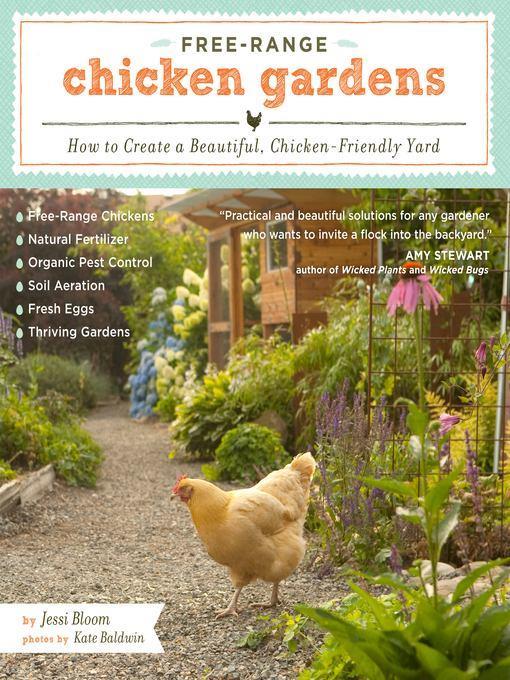
Free-Range Chicken Gardens
How to Create a Beautiful, Chicken-Friendly Yard
کتاب های مرتبط
- اطلاعات
- نقد و بررسی
- دیدگاه کاربران
نقد و بررسی

December 19, 2011
Through personal experience and in-depth interviews with other backyard chicken farmers, Bloom, an award-winning garden designer, takes you from her early chicken-raising days, which she recalls as about “as easy as herding cats,” to the ultimate goal of maintaining a fit flock that will contrast and co-exist with a backyard garden. She gives tips about keeping the backyard from becoming a barnyard; selecting from a diverse palette of poultry from Rhode Island Reds to Easter Eggers; growing the plants that will benefit from hens and beautify a lawn; keeping “a simple chicken emergency kit”; regulating coop temperatures; and keeping predators away. Noise reduction ideas will also help keep neighbors’ potential annoyance at bay. The presentation is enhanced by detailed charts—how many square feet of yard for how many chickens, the chicken lifecycle, feedings from egg to chick to pullet to hen—for help in creating a chicken-inclusive environment in a variety of settings. Bloom offers a comprehensive guide from mating to medicine that will particularly help beginners, and vivid color photography by Kate Baldwin helps Bloom make a persuasive case.

December 15, 2011
Award-winning landscape designer Bloom states that the heart of this book has you look at your garden as a habitat for your flock. Chickens and gardens work together synergistically since chickens reduce weeds and pests, aerate the soil, produce fertilizing manure, and provide food. Bloom and Baldwin's guide to these pets with benefits includes comprehensive information applicable to both small urban and large rural lots pertaining to landscape design, fencing and hardscape materials, chicken-friendly plants, garden and coop designs, and predators. Details on fence fastenings and coop kits, along with numerous illustrations, full-color photos, charts and tables, garden layouts, and useful tips (Cut Miscanthus plants in late winter and use the dried grass as bedding), offer a wealth of practical advice. Beyond that, this how-to presents an ecofriendly, holistic view of human-animal relationships while addressing self-sufficiency and food issues, core motivations for the burgeoning organic, homegrown movement.(Reprinted with permission of Booklist, copyright 2011, American Library Association.)

























دیدگاه کاربران